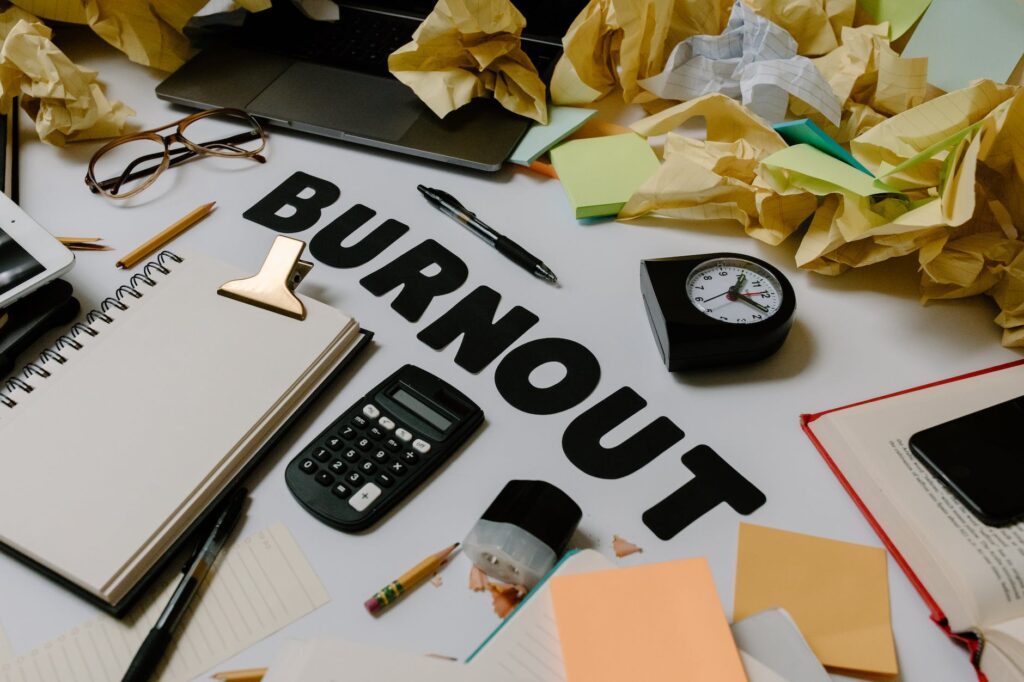Burnout — it’s the proverbial kryptonite in the world of leadership. Feeling mentally, physically, and emotionally exhausted can cast a long, dark shadow over your performance and decision-making abilities. As a leader, burnout can feel particularly intense, given the layers of responsibility and expectations placed upon your shoulders, not just at work, but also at home. But it’s crucial to remember that you are human, not a machine, and even the best leaders can succumb to burnout.
The first step in addressing leadership burnout is acknowledging it. As leaders, we often adopt an “I can handle anything” mentality, which, while admirable, can sometimes blind us to our own limits. We’re taught to lead by example, but that shouldn’t equate to ignoring our own needs. Recognizing that burnout isn’t a failure but rather a human response to prolonged stress is vital.
Once acknowledged, it’s essential to introspect and pinpoint the sources of your burnout. Is it due to excessive workload, unrelenting pressure, or perhaps, a lack of support or resources? Understanding the root cause can help frame a tailored response to address it.
After identifying the cause, consider the art of delegation. Delegation isn’t a sign of weakness or lack of ability. On the contrary, it demonstrates your leadership acumen, trust in your team, and the ability to recognize that a shared load is more manageable and productive. In the immortal words of Andrew Carnegie, “No person will make a great business who wants to do it all himself or get all the credit.” So, evaluate tasks, identify those you can delegate, and empower your team members to take them on.
One of the most underrated, yet fundamentally important aspects to combat burnout is self-care. This includes physical exercise, a nutritious diet, adequate sleep, and mindfulness practices like meditation or yoga. As a leader, you might feel guilty taking time for yourself, but remember, you can’t pour from an empty cup.
In tandem with physical self-care, psychological self-care is equally crucial. Seeking professional help through therapy or coaching can be an invaluable step. A trained professional can provide objective insights, strategies to manage stress, and techniques to promote better mental health.
Another important step is cultivating a supportive network. It’s easy to isolate when you’re feeling burned out, but this can exacerbate the problem. Reach out to trusted peers, mentors, or friends who understand the pressures of leadership. They can provide comfort, wisdom, and a fresh perspective.
Finally, remember that it’s okay to step back when necessary. This could mean taking a sabbatical, vacation, or even a personal day. The world won’t stop turning if you’re not in the office for a few days. Giving yourself permission to rest and rejuvenate can have a profound impact on your well-being and leadership effectiveness.
In conclusion, leaders are not impervious to burnout. It’s a reality that many face in the high-pressure environment of leadership roles. Acknowledging the signs, identifying the sources, delegating tasks, prioritizing self-care, seeking professional help, building a supportive network, and taking time off are all integral steps in mitigating the effects of burnout.
Remember, leadership is a journey, not a sprint. It’s essential to pace yourself, recharge your batteries, and ensure you’re running on a full tank. As a leader, you set the tone for your team. So, in taking care of your well-being, you’re also creating a culture that prioritizes health, wellness, and sustainability. In the long run, this will not only boost your effectiveness as a leader but also foster a more resilient, balanced, and successful team.
For more great information on leadership, please check out my book, The Indispensable Leader, on Amazon.

